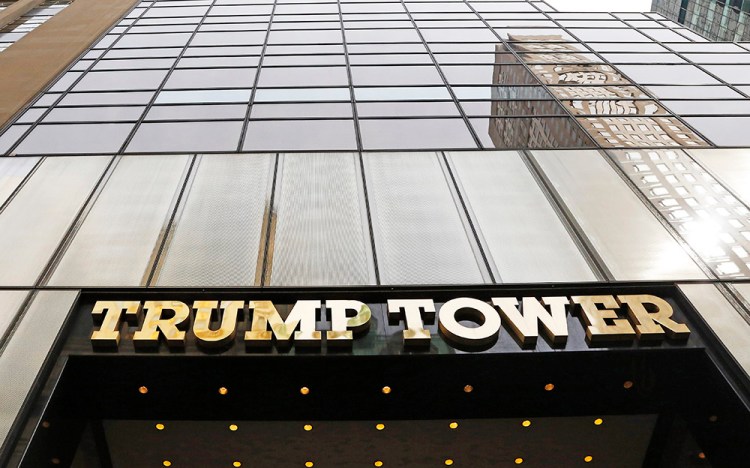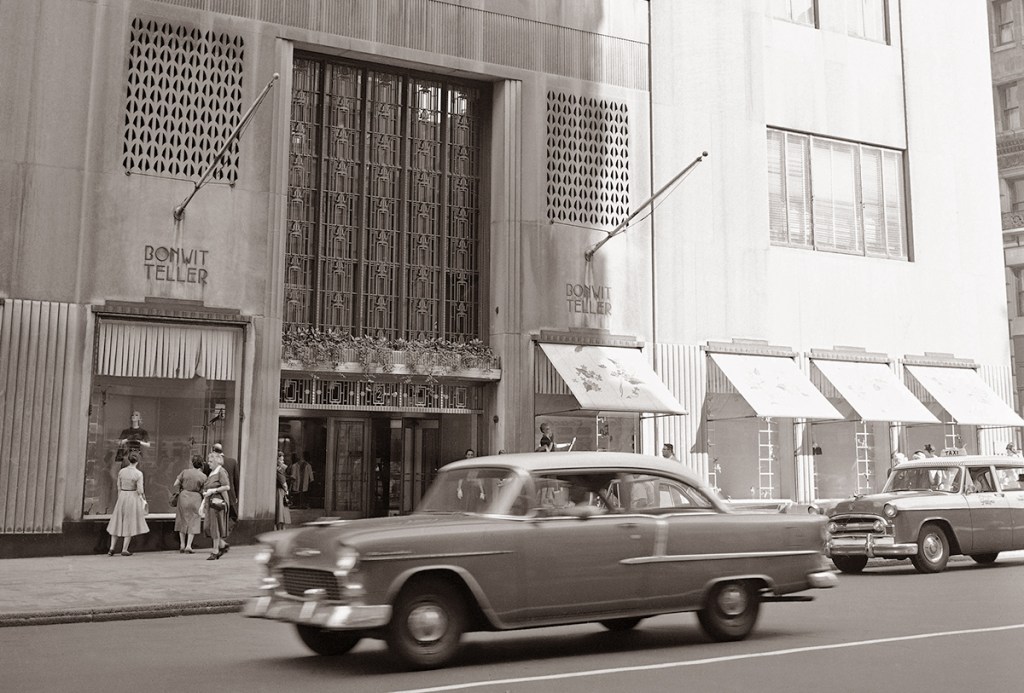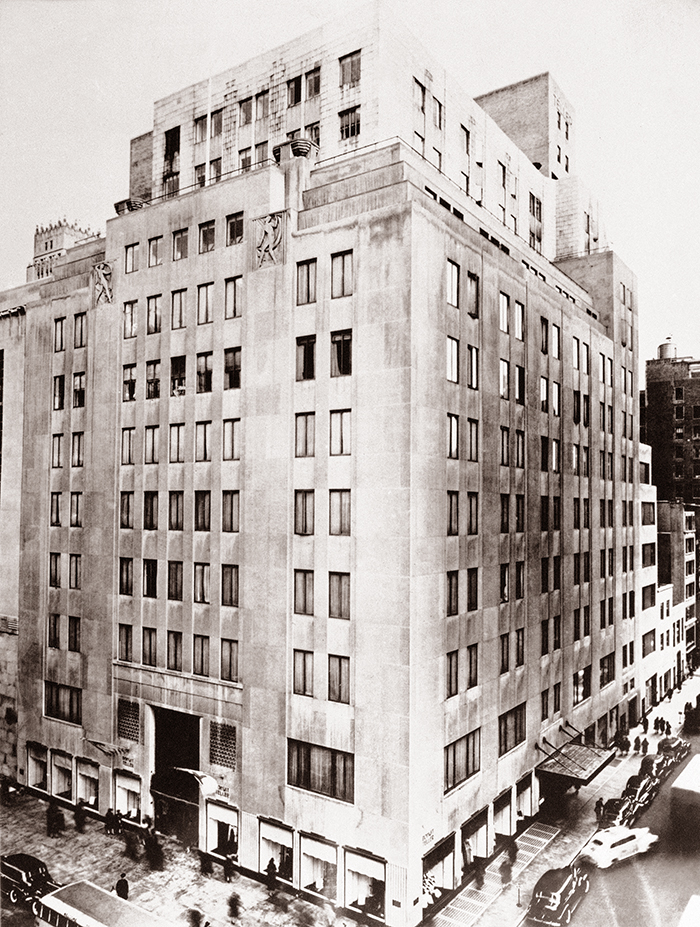Two stone bas-relief sculptures high on the façade of the Bonwit Teller Building under demolition on Fifth Avenue – pieces that had been sought with enthusiasm by the Metropolitan Museum of Art – were smashed by jackhammers yesterday on the orders of a real estate developer.
— New York Times (June 6, 1980)
With this sentence, printed on page B5 of the Times on a late spring day 36 years ago, Donald Trump’s tempestuous relationship with the media began.
Trump, the “real estate developer” referenced by writer Robert D. McFadden, had certainly been mentioned in the press before. His name showed up frequently in brief accounts of property transactions, such as when he purchased the Bonwit building for $15 million in 1979. But, as evidenced by the Times’ decision not to use his name in the lead (or, indeed, in the first four paragraphs), Trump was not yet a well-known public figure.
So it was this story of sculptures and jackhammers that would introduce the contentious Trump-media dynamic that persists – and continues to intensify – today, as the now-billionaire leads the race for the Republican presidential nomination.
The whole testy episode started with a promise. Trump, 33 at the time, was tearing down the Bonwit building to make way for Trump Tower. The façade of the 11-story structure, completed in 1929, featured a pair of 15-foot-tall Art Deco panels “depicting stylized, partly draped female nudes,” according to the Times. The Met wanted them, and Trump said the museum could have them, so long as the cost of removal wasn’t prohibitive.
He had also agreed to turn over what the paper described as a “gilded 20-by-30-foot grillwork of interlocking geometric designs built into the main entrance of the Fifth Avenue building.”
These seemed like modest considerations; on one previous project alone, Trump had received tax abatements valued at $56 million. A spokesman for New York Mayor Ed Koch told the Times that, given such incentives, Trump had a “moral responsibility to consider the interests of the people of the city.”
And yet, without warning, Trump’s demolition crew destroyed the sculptures.
What followed was a display of arrogance, excuse-making and avoidance of tough questions that is familiar to anyone who has observed Trump’s interactions with the media throughout his campaign for the White House.
When first questioned about the fate of the sculptures, Trump spokesman John Barron claimed that three independent appraisers had declared them to be “without artistic merit” – an assessment that flabbergasted Ashton Hawkins, vice president and secretary of the board of trustees of the Met.
“Can you imagine the museum accepting them if they were not of artistic merit?” he asked.
Barron said removing the pieces would have cost $32,000 and delayed work by at least a week and a half.
In a follow-up story the next day, Barron conceded that the rare bronze grillwork was missing and said “we don’t know what happened to it.”
On the third day of Sculpture-gate, a Times story noted that “repeated efforts over the last three days to reach Mr. Trump have been unavailing.”
On the fourth day, Trump finally talked:
“Donald J. Trump said last night that he had ordered the destruction of two Art Deco bas-relief sculptures on the Bonwit Teller Building last week because their removal could have cost more than $500,000 in taxes, demolition delays and other expenses, and might have endangered passing pedestrians on Fifth Avenue.
” ‘My biggest concern was the safety of people on the street below,’ said the 33-year-old developer, who contended that cranes, scaffolding and the most careful handling could not have assured the safe removal of the cracked and weathered two-ton limestone panels from high on the building’s facade.
” ‘ If one of those stones had slipped,’ he said, ‘people could have been killed. To me, it would not have been worth that kind of risk.’
“Mr. Trump, who is having the 50-year-old Bonwit building on Fifth Avenue at 56th Street razed to make way for a $100 million glass skyscraper, also said that he had ordered demolition workers several weeks ago to cut up and dispose of a huge Art Deco nickel grillwork over the building’s main entrance because the piece could not have been taken down otherwise.”
Amazing, right? The cost went from $32,000 to $500,000 the moment Trump opened his mouth. The mystery of the missing grillwork was solved – Trump had ordered it to be cut up. The project delay, originally pegged at a week and a half, would actually have been three weeks, Trump said later in the article. And after being criticized by the mayor for ignoring the “interests of the people of the city,” Trump somehow spun his destructive decision into a protection of public safety.
In an editorial the following week, the Times wondered whether Trump was vying “to win a stupendous new unpopularity prize:”
“Mr. Trump may assume that esthetic vandalism soon vanishes from civic memory. But what he has destroyed with the sculptures is the public image he was building with his new Fifth Avenue skyscraper. His act was a memorable version of cash flow calculations outweighing public sensibilities. True, it would have cost more to save the sculptures than to destroy them, but in a $100-million project one would have thought that the difference was affordable. The Metropolitan, at first amused by the builder’s rejection of its estimate of the sculptures’ worth, is now merely incredulous that no one asked how they might have been removed before the jackhammers struck.”
Later in the summer of 1980, the Times published a 2,200-word Trump profile that revisited the sculpture episode. The ending of the piece is so perfectly, quintessentially Trump in the way it captures his persona.
So we will just leave it at this:
“There is nothing I would like to do more than give something to a museum,” he said in a recent interview. Why? “I’ve always been interested in art.” A visitor observed that there was no art in Mr. Trump’s office. The developer considered this for a moment. Then, with a smile, he pointed to an idealized illustration of Trump Tower hanging on one of the walls.
” ‘If that isn’t art,’ Mr. Trump said, ‘then I don’t know what is.’ “
Send questions/comments to the editors.





Success. Please wait for the page to reload. If the page does not reload within 5 seconds, please refresh the page.
Enter your email and password to access comments.
Hi, to comment on stories you must . This profile is in addition to your subscription and website login.
Already have a commenting profile? .
Invalid username/password.
Please check your email to confirm and complete your registration.
Only subscribers are eligible to post comments. Please subscribe or login first for digital access. Here’s why.
Use the form below to reset your password. When you've submitted your account email, we will send an email with a reset code.